#army regiment
Explore tagged Tumblr posts
Text




March 18th 1689 saw the Earl of Leven raise a Border regiment to hold Edinburgh against the Jacobites.
Leven’s letter of authority read
‘The Committee…may be pleased to grant warrant to the Earl of Levin, with all expedition to levie ane regiment of foot consisting of eight hundred men, and to beat drummes to that effect. And that so soon as they are in readiness, he cause them Rendezvous in the Abbey Close....
In what is said to have been something between two and four hours, Leven raised 780 men ‘by beat of drum’ and mustered them as ordered by the ruins of the Abbey Church at Holyrood.
The regiment first saw action at the Battle of Killiecrankie on July 27th of that year although the Jacobite rebels forced the Government army to retreat.
The regiment became known as the King's Own Scottish Borderers.
12 notes
·
View notes
Text

A member of the Harlem Hellfighters (369th Infantry Regiment) poses for the camera while holding a puppy he saved during World War I, 1918.
#reddit#rarehistoricalphotos#peanuts_36#harlem hellfighters#new york army national guard#wwi#world war 1#world war i#369th infantry regiment#puppy#soldier#blm#history#black history#black history month#dog#1918#1910s#photography#b&w#blurry#movement#blur
151 notes
·
View notes
Text

Great colour shot of a German motorcyclist of the 110th Artillery Regiment on his DKW NZ 500. Winter, 1940, location unknown . Note the WH marker on the mudguard under the number plate. This is for Wehrmacht Heer (Armed Forces Army). Luftwaffe number plates were WL and Kriegsmarine plates were WM for Wehrmacht Marine (Armed Forces Navy)
93 notes
·
View notes
Text

Le capitaine Richard D. Winters, executive officer, devant la ferme Schoonderlogt (au sud d'Arnhem) – Elst – Pays-Bas – Octobre 1944
#WWII#WW2#armée américaine#us army#101e division aéroportée#1st airborne division#screaming eagles#506th infantry regiment#506th pir#easy company#band of brothers#les femmes et les hommes de la guerre#women and men of war#richard winters#dick winters#schoonderlogt#elst#pays-bas#netherlands#10/1944#1944
47 notes
·
View notes
Text
Today a little excursion ashore and to a topic that may seem a little strange. But I'm currently working on a little project about the Household Cavalry Mounted Regiment (dating from 1660) and the Navy (please don't ask any questions yet, I'm still collecting documents). You may have seen these gentlemen and a few ladies at parades in London or somewhere else. They are on horseback and perform mounted (and some dismounted) ceremonial duties at state and royal occasions and consist of two regiments: The Life Guards and The Blues and Royals (Royal Horse Guards and 1st Dragoons) and they are the King's official bodyguards.
You might ask me now: Yes, fine, and what does that have to do with nautical matters? Well, there is a small but subtle detail on the Life Guards uniforms.
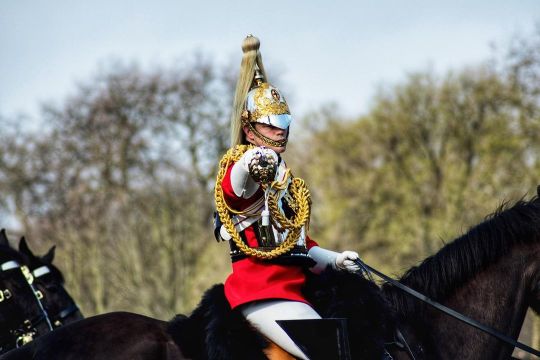
A Life Guard officer in full ceremonial uniform
You can see this hair-like detail on the helmet. That's the white plume, which in the past, but especially in the 18th and 19th centuries, was not made from hair, but from whale bone shavings from corset shops. Exciting what whale was used for.
I thought I'd share this little fact with you, maybe you'll find it as interesting as I did.
149 notes
·
View notes
Text

The URG-I in action.
46 notes
·
View notes
Text
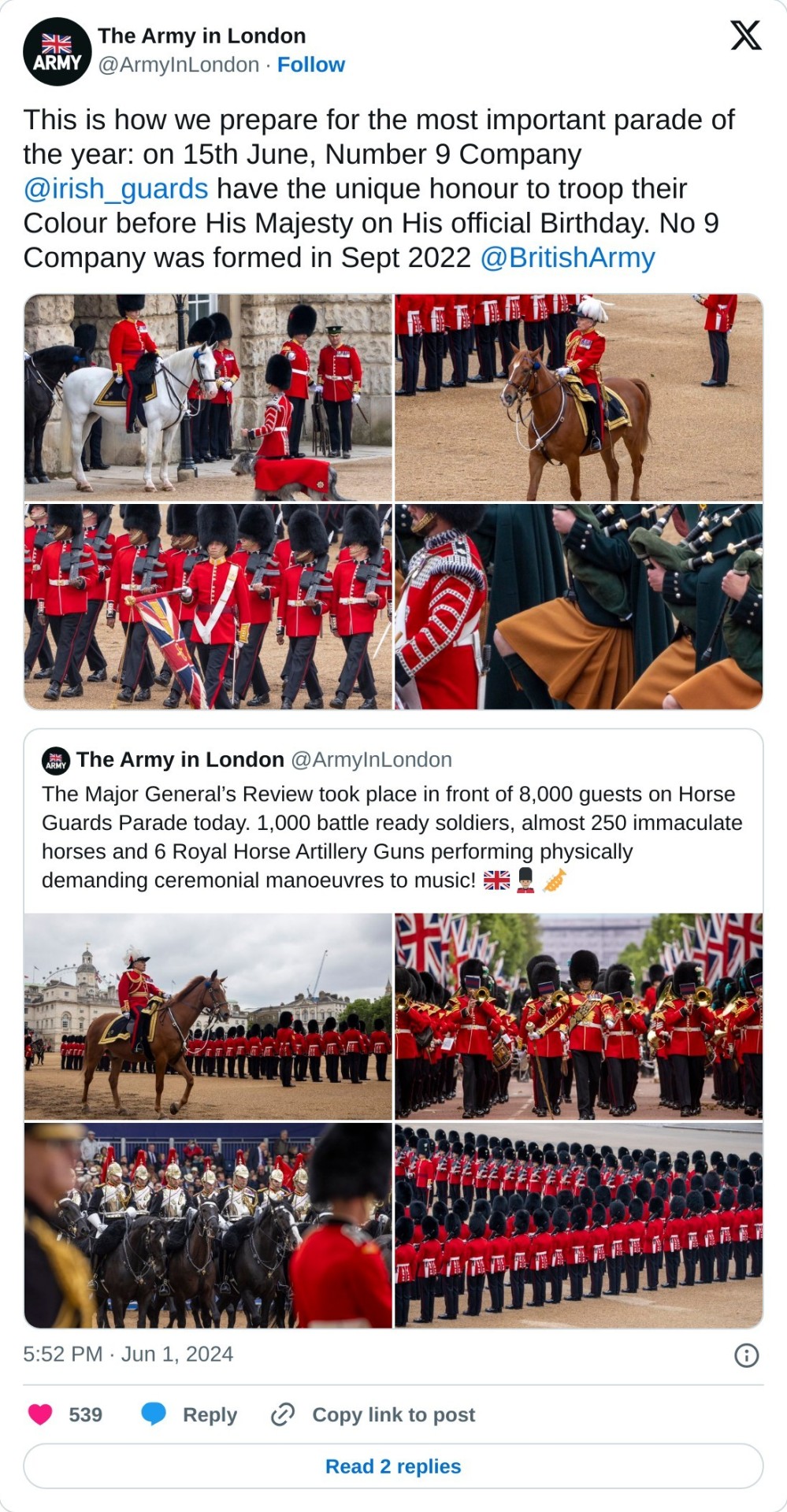
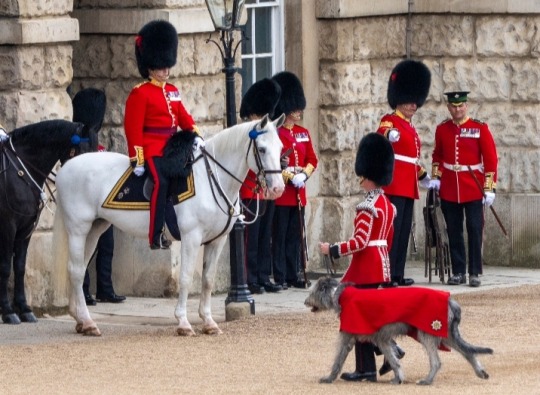
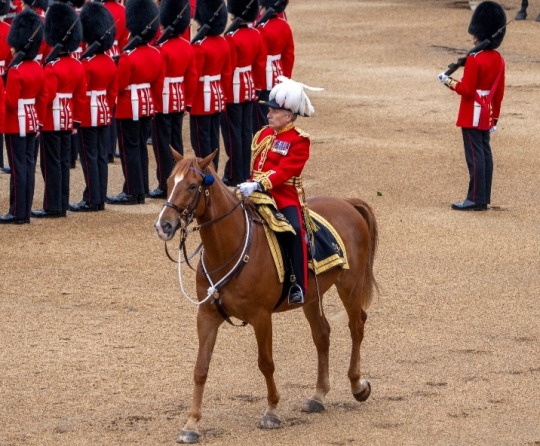
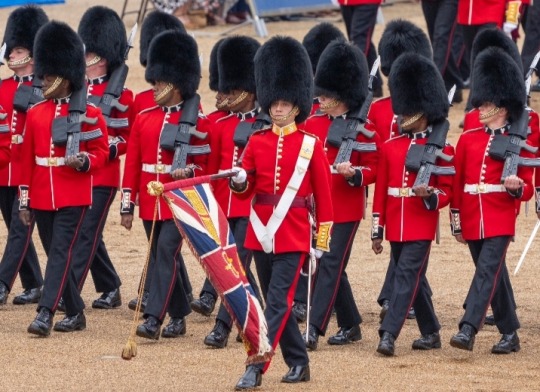
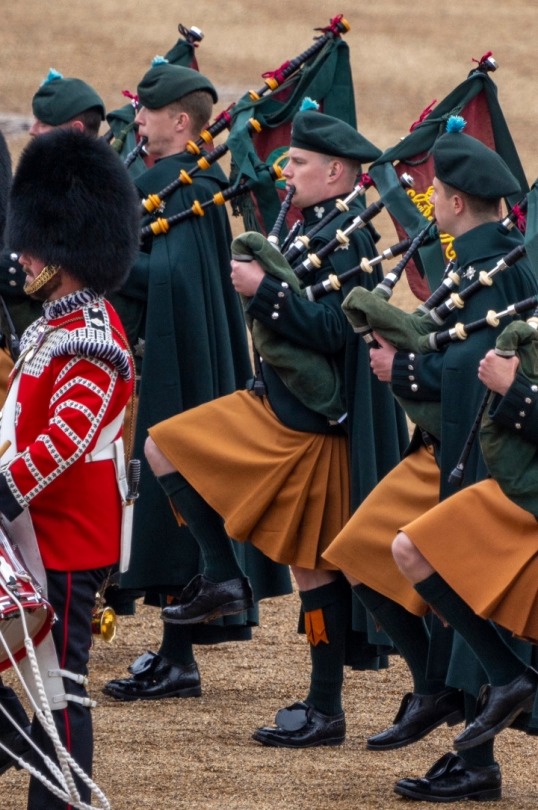
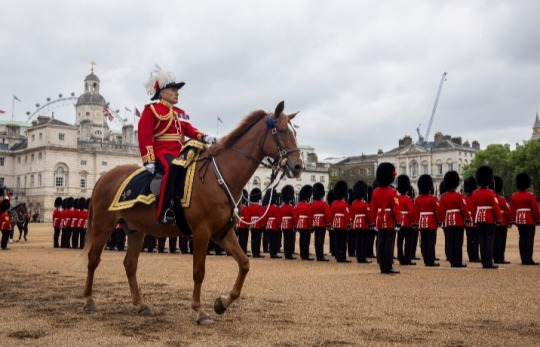
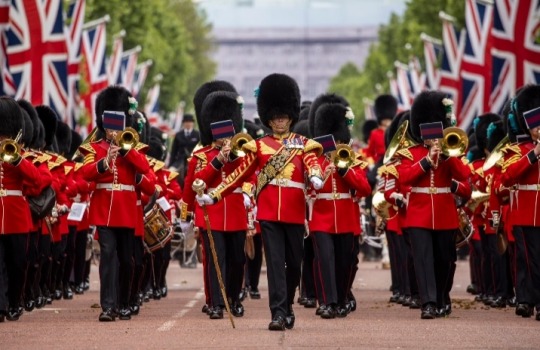
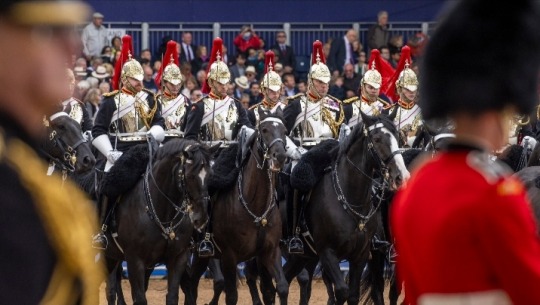
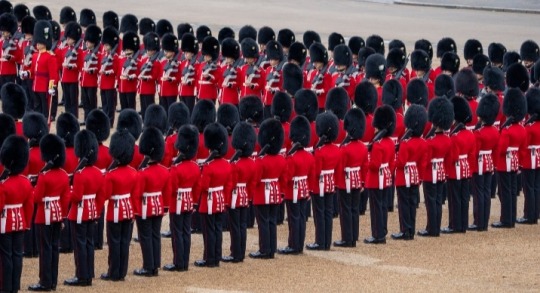
#Trooping The Colour#Trooping The Colour 2024#British Army#Irish Guards#The Major General’s Review#Horse Guards Parade#Royal Horse Artillery Guns#King Charles III#Brigade Major’s Review#public rehearsal#birthday parade#Seamus#dressing#horses#guards#soldiers#Regimental Mascot#Royal Corps of Army Music#Regimental Band of the Irish Guards
57 notes
·
View notes
Text

18 year-old Private George Kennedy (1943)
At the height of World War II in 1943, George Kennedy enlisted in the Army while still in high school. Originally he wanted to be a pilot in the Air Corps, but at 6'4" he overshot the pilot height limit of 6'2". He was eventually assigned to the Infantry and was sent to fight in Europe. He served under General George Patton in the 99th Infantry Division's Cannon Company, 395th Infantry Regiment, and saw action in North Africa, Anzio, and the Battle of the Bulge.
After the war, George was assigned to the Army Signal Corps as a Public Communications Officer where his baritone voice landed him on the air as a radio host and DJ on the Armed Forces Radio Network. Eventually he helped establish the Army Information Office under General William Westmoreland at the Pentagon, which provided technical services to the film and television industries. It was in this capacity that George served as Army technical advisor on The Phil Silvers Show (Sgt. Bilko) and set his future career in motion.
George served 16 years in the Army before heading to Hollywood. Before retiring at the rank of Captain, he earned 2 Bronze Stars for valor and four rows of service medals, including the Presidential Unit Citation, the American Campaign medal, the Europe/African/Middle Eastern Campaign medal, the World War II Victory medal, the Army Occupation medal, and the National Defense Service medal.

#george kennedy#us army#us armed forces#infantry#ww ii#celebrities who served#veterans day#hollywood#old hollywood#classic hollywood#20th century#november 11#academy awards#academy award winner#oscar winner#99th infantry#395th infantry regiment#battle of the bulge#battle babies
33 notes
·
View notes
Photo

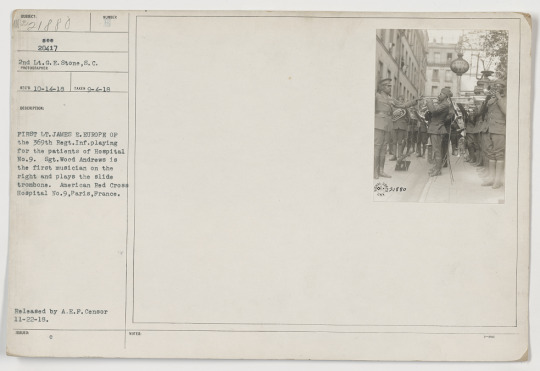
1st Lieutenant James Reese Europe and the 369th Infantry Regiment Band (the Harlem Hellfighters) play for patients in the American Red Cross Hospital No. 9, Paris, France, September 4, 1918.
Record Group 111: Records of the Office of the Chief Signal Officer
Series: Photographs of American Military Activities
Image description: 1st Lieutenant Europe conducts a brass band who are standing in rows outside a building. All of the men are wearing WWI Army uniforms. A sign in the background reads HOTEL TUNIS. This regiment, the “Harlem Hellfighters,” was made up of all Black soldiers.
Transcription:
SUBJECT: 111SC 218880
NUMBER E
see 20417
2nd Lt. G. E. Stone, S.C.
PHOTOGRAPHER
REC'D 10-14-18
TAKEN 9-4-18
FIRST LT. JAMES E. EUROPE OF the 369th Regt. Inf. playing for the patients of Hospital No. 9. Sgt. Wood Andrews is the first musician on the right and plays the slide trombone. American Red Cross Hospital No. 9, Paris, France.
#archivesgov#September 4#1918#1910s#World War I#WWI#Black history#African American history#369th Infantry Regiment#Harlem Hellfighters#military#U.S. Army#band#music#trumpet#trombone#James Reese Europe
214 notes
·
View notes
Text



On September 23rd 1678 The Earl of Mar was commissioned to raise a regiment nicknamed “Earl of Mar’s Gray Breeks” which later became the Royal Scots Fusiliers.
The history of some regiments can be a bit obscure, this is due to the fact that after the wars of the three kingdoms, and the Bishops Wars when soldiers were used to repress political dissent by both Royalists and Protectorate troops there was an uneasiness to have armies loyal to the state or Crown, so if any further civil war broke out the troops would again be divided. The norm at the time was that the current Colonel of the regiments treated the soldiers as their personal property, they carried his name which changed when transferred and disbanded as soon as possible.
As was the tradition at the time the Regiment was named after its colonel as ‘The Earl of Mar’s Regiment’ and nicknamed ‘the Duke O'Mars Greybreeks’.
The Regiment saw its first action in 1679 at the Battle of Bothwell Bridge when it helped to put down the Covenanter Rebellion which formed following the restoration of King Charles II. Presbyterian ministers who refused to accept the rule of bishops were ejected from their parishes by the crown and took up arms in rebellion.
Charles II died suddenly in 1685 and was succeeded by his unpopular brother James II who was quickly plunged into suppressing mounting discontent, during the Monmouth rebellion of 1685. James Scott the 1st Duke of Monmouth (the illegitimate son of Charles II and the King’s nephew) unsuccessfully attempted to overthrow the unpopular King. The Regiment was once again in action on home soil during this time, suppressing a force raised by the Earl of Argyle in Scotland to support James Scott’s claim to the throne.
In 1686 the Regiment was armed with the ‘Fusil’ muskets, the most modern weapon of the day, instead of matchlock muskets becoming ‘The Scots Fusiliers Regiment of Foot’ it was at this time they became called into the English army to serve during the War of the Spanish Succession. Colonel Thomas Buchan replaced The Earl of Mar as Colonel in 1686 but was removed for refusing to swear allegiance to William III, March 1689.
The Regiment was granted the Royal title in 1712 to become ‘The Royal Scots Fusiliers Regiment’. In 1959 after a series of reforms they were The Royal Scots Fusiliers was amalgamated with The Highland Light Infantry to become the Royal Highland Fusiliers. In 2006 the Regiment was further merged with The Royal Scots Borderers, The Black Watch, The Highlanders, and The Argyll and Sutherland Highlanders to form the Royal Regiment of Scotland.
8 notes
·
View notes
Text
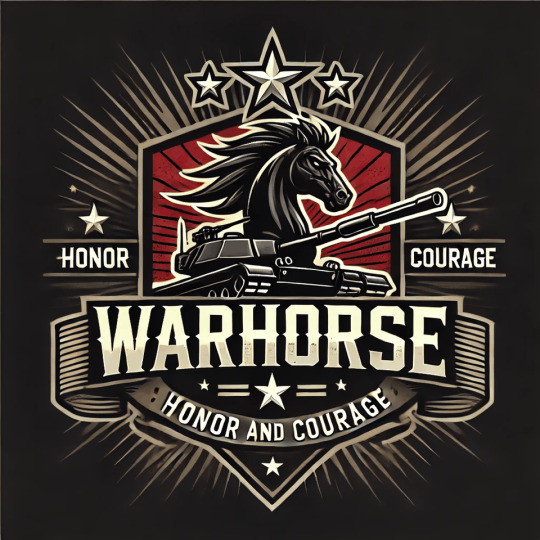
Artist: https://x.com/stitchhorizon & https://scarfodesigns.creator-spring.com/
#3-8 CAV#Warhorse#8th Cavalry Regiment#Honor and Courage#us army#1st Cavalry Division#first team#art#military art
8 notes
·
View notes
Text

I have a confession to make the southern raiders uniforms go so hard
#i feel inspired to draw other fn army regiments/sectors . i wonder if they had a tundra and desert uniform#chat yes or no should i do it#atla#southern raiders#sulove speaks
30 notes
·
View notes
Text

Manchester’s at bayonet practice under the watchful eye of a drill sergeant.
37 notes
·
View notes
Text
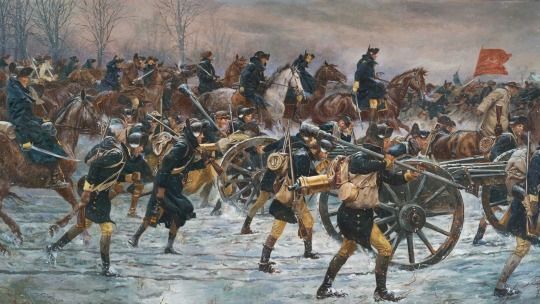
Victory or Death, Advance on Trenton by Don Troiani
#don troiani#art#american revolution#american revolutionary war#alexander hamilton#george washington#artillery#cannons#history#american#america#north america#continental army#trenton#virginia regiment#flag
60 notes
·
View notes
Text
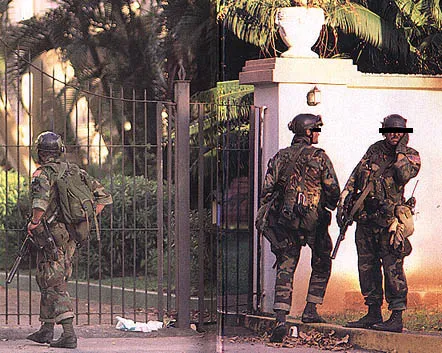
Delta Force during operations in Panama, 1989
#Delta Force#cag#the unit#ace#the boys at bragg#Panama#1989#fort bragg#u.s. army#special forces#75th ranger regiment#82nd airborne#101st airborne
15 notes
·
View notes
Text
Finding one of my direct ancestors on a Revolutionary War muster roll while looking through the US, Revolutionary War Rolls, 1775-1783 collection for a completely different roll (for TAI) is the most surreal experience I’ve had recently. His surname is misspelled, but it’s consistent with other documents I’ve found.

Source: Page 2, subfolder 334 of Folder "15th Regiment (1777-1778)," Virginia troops, US, Revolutionaty War Rolls, 1775-1783, National Archives Manuscript Publication M246, Record Group 93, National Archives and Records Administration. Digitized to Fold3 by Ancestry.com.
[Image: Muster Roll of Captain William Grimes' company of the 15th Virginia Regiment of Foot [Continental Army] for July 1, 1777. Highlighted in a blue square on the far left under "Privates" is "John Bibby." Surname, Bybee, is misspelled].
#grace’s random ramble#amrev#the american revolution#amrev fandom#the American Revolutionary War#muster rolls#revolutionary war muster rolls#fold3#ancestry#family history#my ancestors#18th century history#continental army#virginia history#15th virginia regiment
10 notes
·
View notes